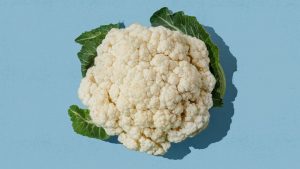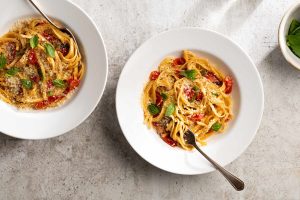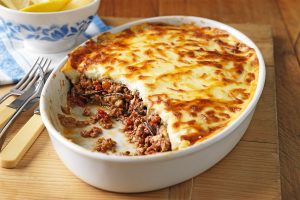
29 interesting facts about deviled eggs
- 👁️ 1196
Deviled eggs, a popular appetizer and party food, have a history and versatility that might surprise many of their fans. This dish involves hard-boiled eggs that are peeled, cut in half, and filled with a paste made from the egg yolks mixed with other ingredients such as mayonnaise and mustard. The name “deviled,” dating back to the 18th century, refers to the spicy or zesty nature of the filling. Though commonly associated with American picnics and gatherings, deviled eggs have roots that reach far back into history and across cultures. Let’s explore some interesting and informative facts about deviled eggs that highlight their culinary journey, variations, and the reasons behind their enduring popularity.
- The concept of stuffed eggs began in ancient Rome, where they were served as a first course for wealthy citizens.
- The term “deviled” was first used in England in 1786 to describe dishes that were highly seasoned, fried, or boiled.
- Deviled eggs as we know them became popular in the United States post-World War II, as mayonnaise became widely available.
- The basic recipe for deviled eggs includes hard-boiled eggs, mayonnaise, mustard, salt, and pepper, but variations are endless.
- Paprika is commonly sprinkled on top of deviled eggs for color and a mild, sweet flavor, though it’s not included in every recipe.
- In addition to paprika, toppings can include herbs, bacon, pickles, or even caviar for an upscale twist.
- The oldest known recipe for stuffed eggs can be found in a 13th-century Andalusian cookbook, where the egg yolks were mixed with cilantro, onion juice, pepper, and coriander.
- In France, a variation of deviled eggs is called “œufs mimosa,” named after the mimosa flower because of the grated egg yolk topping that resembles the flower’s yellow bloom.
- Italian variations, known as “uova ripiene,” often include ingredients like anchovies, capers, and garlic in the filling.
- Deviled eggs can be made healthier by substituting mayonnaise with alternatives like Greek yogurt or avocado.
- Some cultures have their own versions of deviled eggs, incorporating unique spices and ingredients that reflect their culinary traditions.
- A deviled egg platter, specially designed with indentations for the eggs, is a common kitchen item for those who frequently make or serve the dish.
- The filling for deviled eggs can also include creative ingredients like wasabi, blue cheese, or sriracha for a modern twist.
- Food historians believe that the practice of boiling eggs and serving them with spicy sauces dates back to ancient civilizations beyond Rome, including Persia.
- In the American South, deviled eggs are a staple at church potlucks, picnics, and family reunions.
- The term “angel eggs” is sometimes used to describe deviled eggs made with healthier or lighter ingredients.
- Traditional deviled eggs are said to have gained popularity in the United States when home cooks began using a newly marketed product in the 1940s: mayonnaise sold in jars.
- For a smoother filling, some recipes recommend passing the egg yolks through a sieve before mixing them with other ingredients.
- Deviled eggs have appeared in American cookbooks as early as the mid-19th century, showing their long-standing presence in American cuisine.
- The filling mixture can be piped back into the egg whites using a piping bag and tip for a decorative effect.
- In the Netherlands, a version of deviled eggs includes a raw herring topping, blending the flavors of traditional Dutch ingredients.
- To ensure easy peeling, older eggs are recommended for making deviled eggs as they have looser membranes than fresh eggs.
- Some variations of deviled eggs around the world may include ingredients like tuna, salmon, or beet juice for color and flavor.
- To prevent the egg whites from tipping over and to ensure a uniform appearance, a small slice can be cut off the bottom of each egg white half before filling.
- During Easter, deviled eggs become a popular way to use up hard-boiled eggs that have been dyed and decorated.
- The dish’s popularity has spawned numerous kitchen gadgets designed specifically for making deviled eggs, including egg cookers, slicers, and filling dispensers.
- In Poland, deviled eggs filled with mushrooms and topped with dill are a common variation.
- Deviled eggs are considered an economical dish, as they transform simple ingredients into a flavorful appetizer.
- The process of making deviled eggs can be traced back to medieval cooking techniques, where stuffing eggs was a method of enhancing their flavor and presentation.
Deviled eggs, with their rich history and endless variations, are more than just a simple appetizer; they are a culinary canvas that has evolved over centuries and across continents. Whether enjoyed in their most basic form or dressed up with inventive fillings and toppings, deviled eggs continue to be a beloved dish for all occasions. Their enduring popularity is a testament to their versatility, ease of preparation, and the universal appeal of combining simple ingredients to create something delicious. As we continue to experiment with new flavors and ingredients, deviled eggs will undoubtedly remain a staple in culinary traditions around the world.











